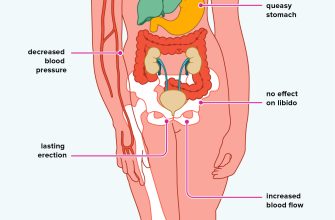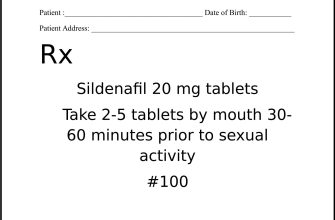Consider starting with a single cycle of Clomid. Many women achieve successful ovulation with just one tube’s worth of medication. This approach minimizes potential side effects and reduces overall cost.
Always discuss your specific situation with your doctor before starting any fertility treatment, including Clomid. They’ll assess your individual health profile, including your age, medical history, and reproductive health, to tailor a plan that works for you. This personalized consultation ensures safe and effective treatment.
Remember: A single tube of Clomid isn’t a guaranteed solution for infertility. Your doctor will monitor your response using tools such as ultrasound and blood tests to track ovulation and adjust the treatment if needed. This close monitoring significantly increases your chance of success.
Potential side effects such as hot flashes, headaches, and mood swings are possible. Your doctor will explain these and other potential risks, allowing you to make an informed decision. Open communication with your physician throughout the process is key.
Following your doctor’s instructions precisely is paramount. This includes taking the medication as directed and attending all scheduled follow-up appointments. Proper adherence maximizes treatment effectiveness and minimizes complications.
- One Tube Clomid: A Comprehensive Guide
- Understanding Dosage and Timing
- Potential Side Effects and Monitoring
- Understanding Clomid Dosage: One Tube’s Implications
- Potential Benefits and Risks of Using One Tube of Clomid
- One Tube Clomid and Ovulation: Tracking and Monitoring
- Common Side Effects Associated with One Tube Clomid Treatment
- Seeking Medical Advice: When to Consult a Doctor About One Tube Clomid
One Tube Clomid: A Comprehensive Guide
Consult your doctor before starting Clomid. A single tube of Clomid typically contains 50 tablets, each 50mg. Your doctor will prescribe the correct dosage based on your individual needs and medical history. Common regimens involve taking one tablet daily for five days, starting on cycle day 3, 5 or 7. However, variations exist, so follow your doctor’s precise instructions carefully.
Understanding Dosage and Timing
The specific timing and duration of Clomid treatment are critical. Incorrect usage can reduce its effectiveness or even be harmful. Never adjust your dosage or schedule without your doctor’s explicit approval. Regular monitoring through blood tests and ultrasounds helps determine the optimal dosage and track follicle development. This ensures the safest and most effective outcome. Remember, consistent communication with your doctor is paramount.
Potential Side Effects and Monitoring
Side effects, while possible, vary among individuals. Common ones include hot flashes, mood swings, headaches, and breast tenderness. More serious, though rare, side effects warrant immediate medical attention. Regular monitoring by your doctor helps to identify and manage any adverse reactions. This proactive approach ensures your health and well-being remain top priorities throughout the treatment.
Understanding Clomid Dosage: One Tube’s Implications
A standard Clomid “tube” contains 50 tablets, each typically 50mg. This means one tube provides a total dose of 2500mg of Clomid. However, dosage is strictly personalized; a single tube may be insufficient, or even excessive, depending on your individual circumstances.
Your doctor determines the appropriate Clomid dosage based on several factors:
- Your age
- Your medical history
- Your reproductive health
- Your treatment goals
Common Clomid treatment protocols range from 50mg to 150mg daily for 5 days. A single tube (2500mg) might cover a 50mg daily dosage for a full month; a 150mg daily dosage for only 16 days; or various other treatment periods and dosages depending on the prescription. Using a single tube to infer the entire treatment plan is inaccurate.
Always follow your doctor’s instructions precisely. They’ll calculate the correct dosage and duration to maximize your chances of success while minimizing potential risks. Never self-adjust your dosage.
- Discuss your treatment plan thoroughly with your physician to understand the rationale behind your prescribed dosage.
- Strictly adhere to the prescribed dosage and schedule.
- Report any unusual side effects promptly.
- Attend all scheduled follow-up appointments.
Remember, a single tube of Clomid doesn’t represent a complete treatment strategy. Proper medical guidance is paramount for a safe and effective outcome.
Potential Benefits and Risks of Using One Tube of Clomid
Consult your doctor before using Clomid, even for a single cycle. Self-treating can be dangerous.
A potential benefit is ovulation induction. Clomid stimulates the ovaries to release eggs, increasing the chance of conception for women with ovulatory dysfunction. Success rates vary widely depending on individual factors like age and underlying fertility issues. Expect realistic outcomes; it’s not a guaranteed pregnancy.
However, using Clomid carries risks. Multiple pregnancies (twins, triplets, etc.) are a significant concern, increasing risks to both mother and babies. Ovarian hyperstimulation syndrome (OHSS) is another possible complication, causing severe abdominal pain and swelling. Visual disturbances and hot flashes are common side effects, often mild, but can be bothersome. Some studies show a slightly increased risk of birth defects with Clomid use. Your doctor should thoroughly discuss these with you.
Remember, one tube of Clomid is just one cycle. Your doctor will assess your response and determine if further treatment is needed. Close monitoring of your progress during and after treatment is vital.
Always follow your doctor’s instructions precisely. Don’t adjust dosage or discontinue treatment without medical supervision. Open communication with your healthcare provider about any concerns or changes in your health is paramount.
One Tube Clomid and Ovulation: Tracking and Monitoring
Use ovulation predictor kits (OPKs) starting around cycle day 10. These kits detect the luteinizing hormone (LH) surge, which precedes ovulation. Test first thing in the morning for the most accurate results. Positive OPK results usually appear one to two days before ovulation.
Chart your basal body temperature (BBT) daily. A slight increase in BBT usually signifies ovulation. Combine BBT charting with OPK results for increased accuracy in pinpointing ovulation.
Consider using a fertility monitor. These devices track hormonal changes to predict ovulation, offering a more advanced approach than OPKs alone. Choose a monitor that suits your needs and budget.
Monitor cervical mucus changes. Fertile cervical mucus is typically clear, stretchy, and abundant. Pay attention to the consistency and quantity of your mucus throughout your cycle. Changes reflect hormonal shifts and can help you identify fertile days.
Schedule an ultrasound with your doctor. A follicle-tracking ultrasound can confirm follicle growth and predict ovulation timing with high precision. This should happen near the expected ovulation time, based on your cycle and OPK results.
Document all your findings meticulously. Keep a detailed record of your OPK results, BBT readings, cervical mucus observations, and ultrasound reports. This data is helpful for your doctor and aids in determining the effectiveness of Clomid treatment.
Regularly consult your doctor. Discuss your findings and any concerns you may have during your Clomid cycle. They can provide personalized guidance and adjust treatment as necessary. Remember, every woman responds differently to Clomid.
Common Side Effects Associated with One Tube Clomid Treatment
Expect some mild side effects. Many women experience hot flashes, headaches, and mood swings. These usually subside once Clomid is discontinued.
Ovarian enlargement is a possibility; your doctor will monitor this through ultrasounds. Rarely, it can lead to ovarian hyperstimulation syndrome (OHSS), characterized by abdominal bloating, pain, and nausea. Report any severe abdominal discomfort immediately.
Visual disturbances, such as blurred vision or light sensitivity, are another potential side effect, typically temporary. If you experience these, contact your doctor.
Nausea and vomiting can occur, often managed with anti-nausea medication. Your physician can advise on managing this symptom effectively.
Multiple pregnancies are a risk with Clomid. This is because it stimulates the release of multiple eggs. Your doctor will discuss this possibility and provide guidance.
Finally, remember to fully inform your doctor about your medical history, including any pre-existing conditions, before starting Clomid treatment. Open communication ensures the safest and most effective treatment plan.
Seeking Medical Advice: When to Consult a Doctor About One Tube Clomid
Contact your doctor immediately if you experience severe abdominal pain, shortness of breath, or vision changes while taking Clomid. These could indicate serious complications.
Schedule a follow-up appointment if you don’t ovulate after completing your Clomid cycle. Your doctor will assess your response and adjust treatment if necessary. They may order blood tests to monitor hormone levels.
Consult your physician before starting Clomid if you have a history of ovarian cysts, liver disease, or uterine fibroids. These conditions can be exacerbated by Clomid.
Seek medical advice if you experience symptoms like bloating, nausea, or hot flashes that significantly impact your daily life. Your doctor can offer strategies to manage these side effects.
Regular monitoring is crucial. Discuss with your doctor the frequency of ultrasounds and blood tests to monitor follicle growth and prevent ovarian hyperstimulation syndrome (OHSS).
| Symptom | Action |
|---|---|
| Severe abdominal pain | Contact your doctor immediately. |
| Shortness of breath | Seek immediate medical attention. |
| Vision changes | Contact your doctor immediately. |
| No ovulation after cycle | Schedule a follow-up appointment. |
| Intense side effects | Discuss management strategies with your doctor. |
Remember, open communication with your doctor is key to a successful outcome. Don’t hesitate to ask questions and address any concerns you may have.









